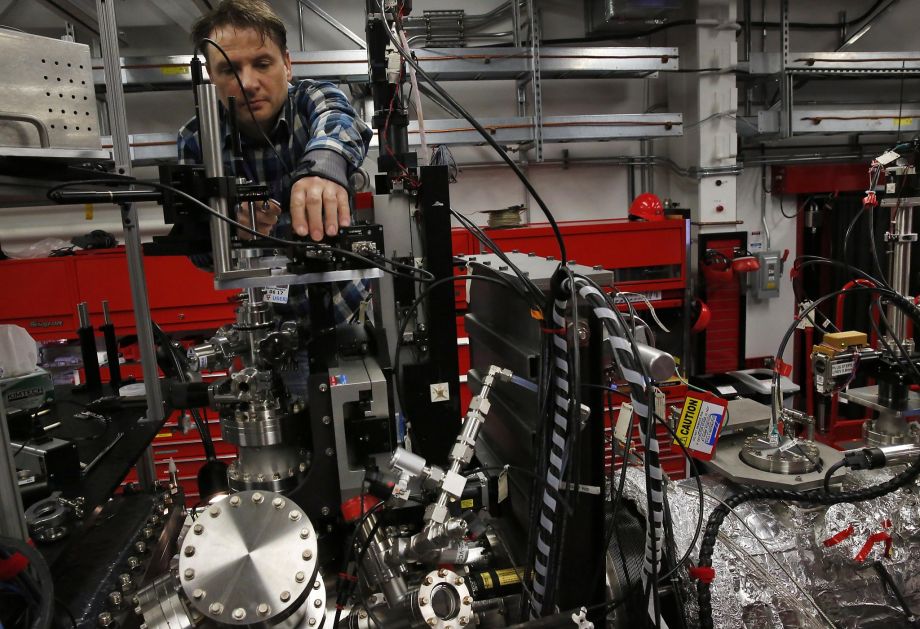In a lab near Stanford where physicists once smashed atoms at the end of a tunnel 2 miles long, a new generation of scientists seeks to probe matter more deeply than ever before with the most brilliant laser beam ever conceived.
On the site of countless experiments with an existing ultra-bright X-ray laser that flashes its beams at 120 times a second, the scientists are about to move far beyond that instrument and create an even more brilliant laser that will fire its luminous X-ray beams even faster — at a million pulses every second.
The beams will reveal the atomic structure of matter so closely they will show the molecular movements of living matter such as viruses and the atoms of solids in motion such as the metals in jet planes. What researchers learn could bring progress in fighting disease, constructing planes or developing electrical circuits, they say, adding that the beams could even reveal the inner cores of the solar system’s planets.
“We’re already creating beams of incredible peak brightness,” said Mike Dunne, a plasma physicist and director of the 7-year-old X-ray laser center. “Now we’re ready to build a new one that’s incredibly faster and 10,000 times brighter.”
Aiding breakthroughs
Work on the X-ray laser began Monday at the Department of Energy’s SLAC National Accelerator Center, 3 miles west of Stanford University. The ultimate cost is $1 billion, paid for by the U.S. Department of Energy. It is expected to be completed in 2020. In contrast, the first laser cost $416 million to build.
The existing laser is called the Linac Coherent Light Source, or LCLS, and scientists have high hopes for what the new laser, dubbed LCLS-II, will achieve. It could lead to a new understanding of how the sun works, how planets were formed, and how to understand astrophysical conditions of extreme temperatures and pressures, Dunne said.
And even more important to everyday life, the new laser’s penetrating beams will be able to reveal processes in the natural world to aid medical research, he said: the reproduction cycles of proteins, the activity of human cells as they reproduce, and even the twin mechanisms of drugs like morphine that both relieve pain and induce addiction.
For example, Felicie Albert, a French-born plasma physicist from the Lawrence Livermore National Laboratory, is aiming the light of the current X-ray laser, coupled with a battery of optical lasers, to heat iron atoms that are found in the sun’s interior and in cores of planets such as Earth.
With the X-ray laser’s intense heat and pressure, Albert is studying the transformation of those iron atoms, and with the much more brilliant energy of the new X-ray laser’s beams, she hopes to understand the behavior of other elements in the cores of the sun and far distant planets such as Uranus and Neptune.
“You cannot find the combination of a bright X-ray source with high-power optical lasers anywhere in the world right now,” she said, “which is why I chose to do my experiments here.”
Working even harder
Nearby, at another instrument station, physicist Andy Aquila leads a team probing biological matter of all kinds — from the DNA of proteins to the molecular machinery of the rice dwarf virus, a dangerous pest that destroys entire plantations of Japanese and Chinese rice in a single season. Understanding the mechanism of viral infection is the first step toward defeating it, Aquila explained.
“The laser’s our biological workhorse, and the new one will work even harder,” he said.
For decades, physicists had worked on this campus blasting atoms with high-speed beams of electrons to reveal the identities of the mysterious subnuclear particles that make up all the matter of the universe. Six physicists won Nobel prizes for their discoveries with that powerful machine, the first Stanford Linear Accelerator.


